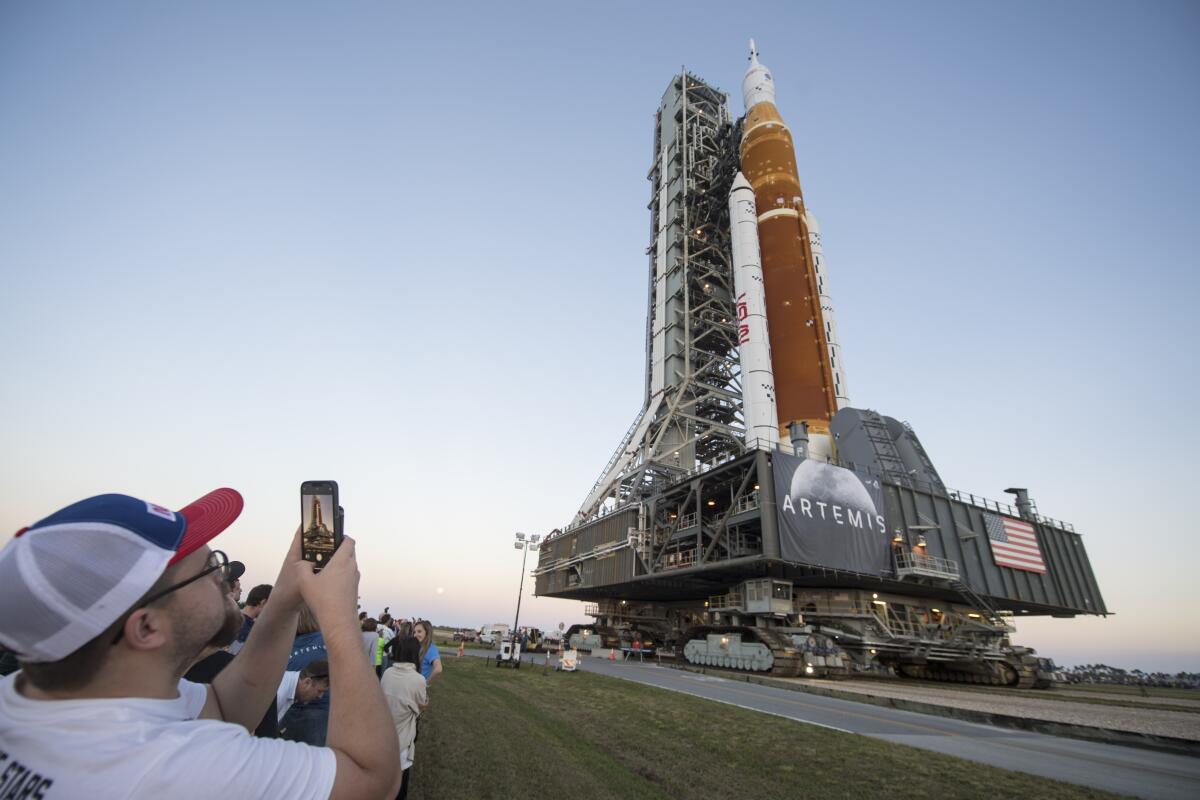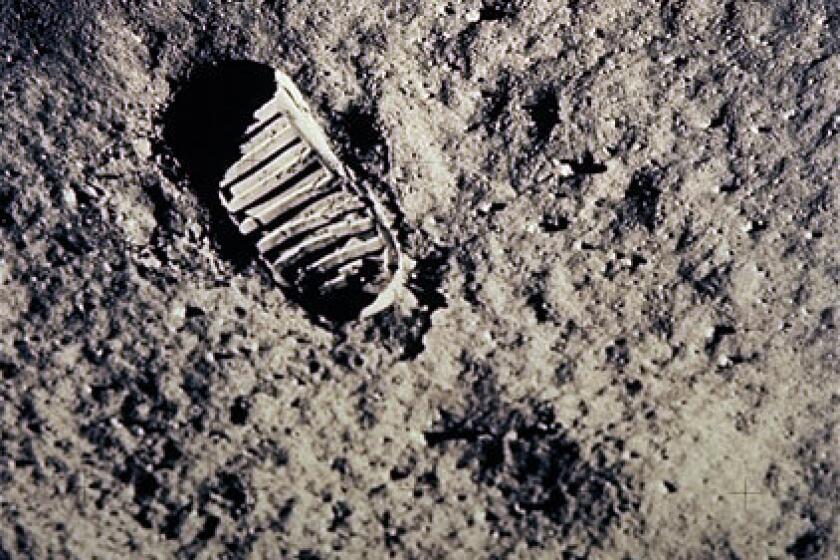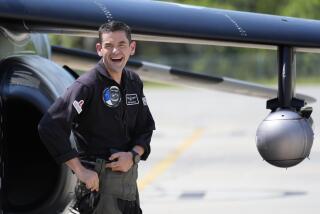NASA aims for late August test flight of giant moon rocket

CAPE CANAVERAL, Fla. â On the 53rd anniversary of the Apollo 11 lunar landing, NASA announced Wednesday that itâs shooting for a late August launch of its giant, new moon rocket.
NASA will attempt the more than monthlong lunar test flight with three mannequins â but no astronauts â as early as Aug. 29. There are two launch dates in early September before NASA would have to stand down for two weeks.
Jim Free, NASAâs associate administrator for exploration systems development, noted that the test flight begins âour Artemis program to go back to the moon.â
The space agencyâs new lunar program is named Artemis after Apolloâs twin sister in Greek mythology.
Nearly 50 years ago, Neil Armstrong became the first man to walk on the moon. A woman could follow in his footsteps in 2024. Hereâs what we know about her.
The 30-story Space Launch System rocket and attached Orion capsule are currently in a hangar at Kennedy Space Center after repairs stemming from last monthâs countdown test. Fuel leaks and other technical trouble cropped up during NASAâs repeated launch rehearsals at the pad.
NASA officials assured reporters Wednesday that the problems have been resolved and that testing is almost complete. But they cautioned the launch dates could slip, depending on the volatile Florida weather and issues that might arise before the rocket is supposed to return to the pad on Aug. 18.
âWeâre going to be careful,â Free said.
At 322 feet (98 meters), the rocket and Orion capsule are taller than the Statue of Liberty.
If Orionâs trip to the moon and back goes well, astronauts could climb aboard in 2023 for a lunar loop-around. A crew could land in 2025.
Astronauts last explored the moon in 1972. The first of the 12 moonwalkers, Neil Armstrong and Buzz Aldrin, stepped onto the dusty gray surface on July 20, 1969, while Michael Collins orbited the moon.
The 92-year-old Aldrin, the sole survivor of the three, noted the anniversary in a tweet: âNeil, Michael & I were proud to represent America as we took those giant leaps for mankind. It was a moment which united the world and Americaâs finest hour.â







